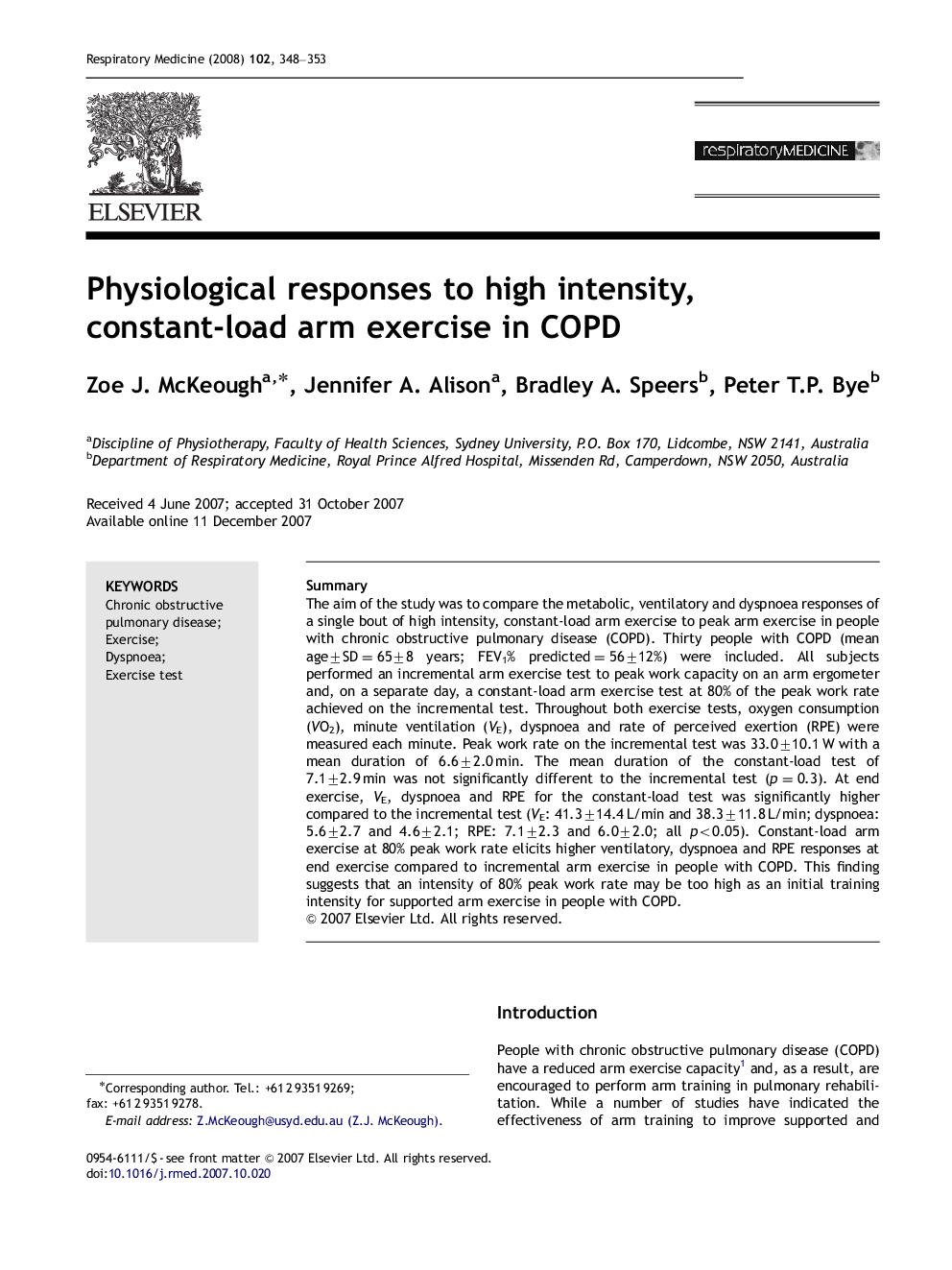| Article ID | Journal | Published Year | Pages | File Type |
|---|---|---|---|---|
| 4211287 | Respiratory Medicine | 2008 | 6 Pages |
SummaryThe aim of the study was to compare the metabolic, ventilatory and dyspnoea responses of a single bout of high intensity, constant-load arm exercise to peak arm exercise in people with chronic obstructive pulmonary disease (COPD). Thirty people with COPD (mean age±SD=65±8 years; FEV1% predicted=56±12%) were included. All subjects performed an incremental arm exercise test to peak work capacity on an arm ergometer and, on a separate day, a constant-load arm exercise test at 80% of the peak work rate achieved on the incremental test. Throughout both exercise tests, oxygen consumption (VO2), minute ventilation (VE), dyspnoea and rate of perceived exertion (RPE) were measured each minute. Peak work rate on the incremental test was 33.0±10.1 W with a mean duration of 6.6±2.0 min. The mean duration of the constant-load test of 7.1±2.9 min was not significantly different to the incremental test (p=0.3). At end exercise, VE, dyspnoea and RPE for the constant-load test was significantly higher compared to the incremental test (VE: 41.3±14.4 L/min and 38.3±11.8 L/min; dyspnoea: 5.6±2.7 and 4.6±2.1; RPE: 7.1±2.3 and 6.0±2.0; all p<0.05). Constant-load arm exercise at 80% peak work rate elicits higher ventilatory, dyspnoea and RPE responses at end exercise compared to incremental arm exercise in people with COPD. This finding suggests that an intensity of 80% peak work rate may be too high as an initial training intensity for supported arm exercise in people with COPD.
